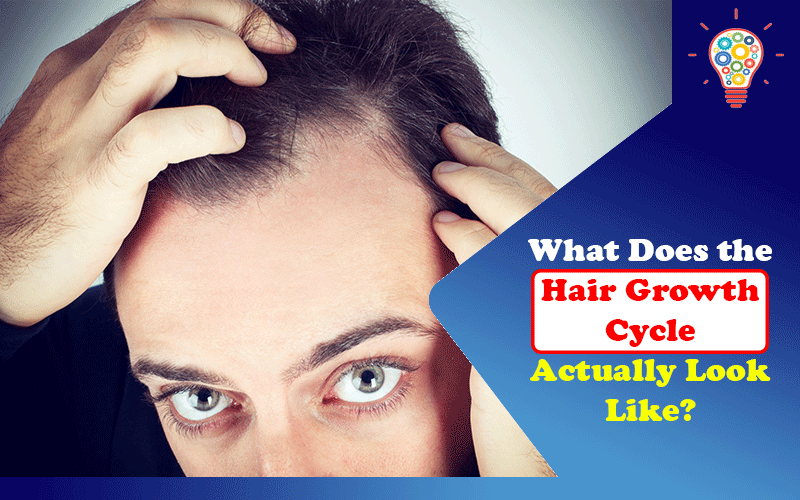Something that you may not realize is that hair is more complex than it seems. While hair plays a huge role in how you look, it also helps create gender identification and transmit sensory information.
Learning more about hair can help you better understand the role it has in your life. Keep reading to learn more about the hair growth cycle and other interesting information about your hair.
Table of Contents
The Beginning of Hair
By week 22, babies in the womb have all the hair follicles in place, fully developed. At this point, there are around five million hair follicles covering the body. This breaks down into one million on the head and 100K of those on the scalp.
These are the most hair follicles you will ever have. You don’t generate new hair follicles during your life.
For most people, the density of the hair on their scalp will be reduced as they age. This is because your scalp expands as you grow.
Sometimes this can even lead to hair loss. If this happens, there are treatments and solutions to consider, such as the ru58841 solution.
How Does Hair Grow?
As mentioned above, hair grows from your hair follicles. Every follicle has a root, which is actually made with protein cells at the base. This is where each hair you have starts to grow.
The blood vessels that are in your scalp will send necessary nutrients to the roots of your hair. This helps synthesize it.
As your hair continues to grow, it is pushed up through the skin and will start to poke out. Attached to the follicle are oil glands. These provide natural shine, softness, and lubrication to your hair.
The Hair Growth Cycle
There are four stages in the hair growth cycle.
Anagen: The Growth Stage
The anagen phase is the first stage of hair growth. It is also the longest stage and will last for approximately three to five years for hairs on your head. While this is true, some people have anagen stages that last over seven years.
This phase is different for each type of hair you have. This stage for pubic and eyebrow hairs is shorter than the stage for the hair on your scalp.
During this stage, your hair follicles push hairs out that will keep growing until they die and fall out or until they are cut.
It’s estimated that approximately 90% of the hairs on your head are in the anagen phase at any given time.
Catagen: Transitional Stage
The transition or regression phase is related to Pitta Kala. During this stage, the follicle will renew itself by shrinking to about 1/16th its length. During this time, the papilla rests, too.
While the hair strand is separated from the dermal papilla and no longer receives nutrients, it doesn’t shed away. The shrunken walls in the hair follicle keep it in place for a while.
Usually, this stage lasts for about two to three weeks.
Telogen: Resting Stage
During the third stage, the telogen stage, your hair is resting. About six to eight percent of your hairs are in this stage at any given time.
The telogen stage lasts for around 100 days for scalp hairs and longer for hairs on your legs, arms, eyelashes, and eyebrows.
During this stage, the hair follicle remains at rest. This is also when club hair is created.
If you pull a hair out that is in this stage, you will see a white, dry, hard, and solid material around the root. You lose between 25 and 100 telogen hairs daily.
Exogen: Shedding Stage
This phase is usually just an extension of the telogen stage when it comes to hair growth. During this phase, your hair is shed off the scalp.
Usually, the shedding is aided by brushing and washing your hair. You can expect to lose between 50 and 100 hairs each day during this phase.
The exogen stage will last between two and five months in most cases. As the old hairs fall out, new hairs begin to grow.
Does Hair Change Every Seven Years?
Usually, hair growth will last for between four and seven years. However, this is only true for the initial two to three cycles.
As you get older, the anagen phase gets shorter, which means the hair coming back is thinner. Eventually, you may begin to notice the change and opt for hair treatment and restoration solutions.
Understanding the Hair Growth Cycle
The hair growth cycle includes four distinct cycles. These are anagen, catagen, telogen, and exogen.
Every stage is important in the growth cycle. If you want to ensure your hair remains healthy throughout your life, you have to care for it properly.
Some of the steps you can take to care of your hair include living a low-stress life, eating a healthy diet, and engaging in proper hair care. When you do this, you can promote healthy hair growth for decades.
If you are worried you may be losing hair faster than you should, it is good to discuss the problem with a doctor. Sometimes, you may be dealing with an underlying condition that has impacted the hair growth stages.
Finding the right treatment can help restore your hair.
Are you looking for more helpful information and resources? If so, be sure to check out some of the other blogs on our website.


One thought on “What Does the Hair Growth Cycle Actually Look Like?”